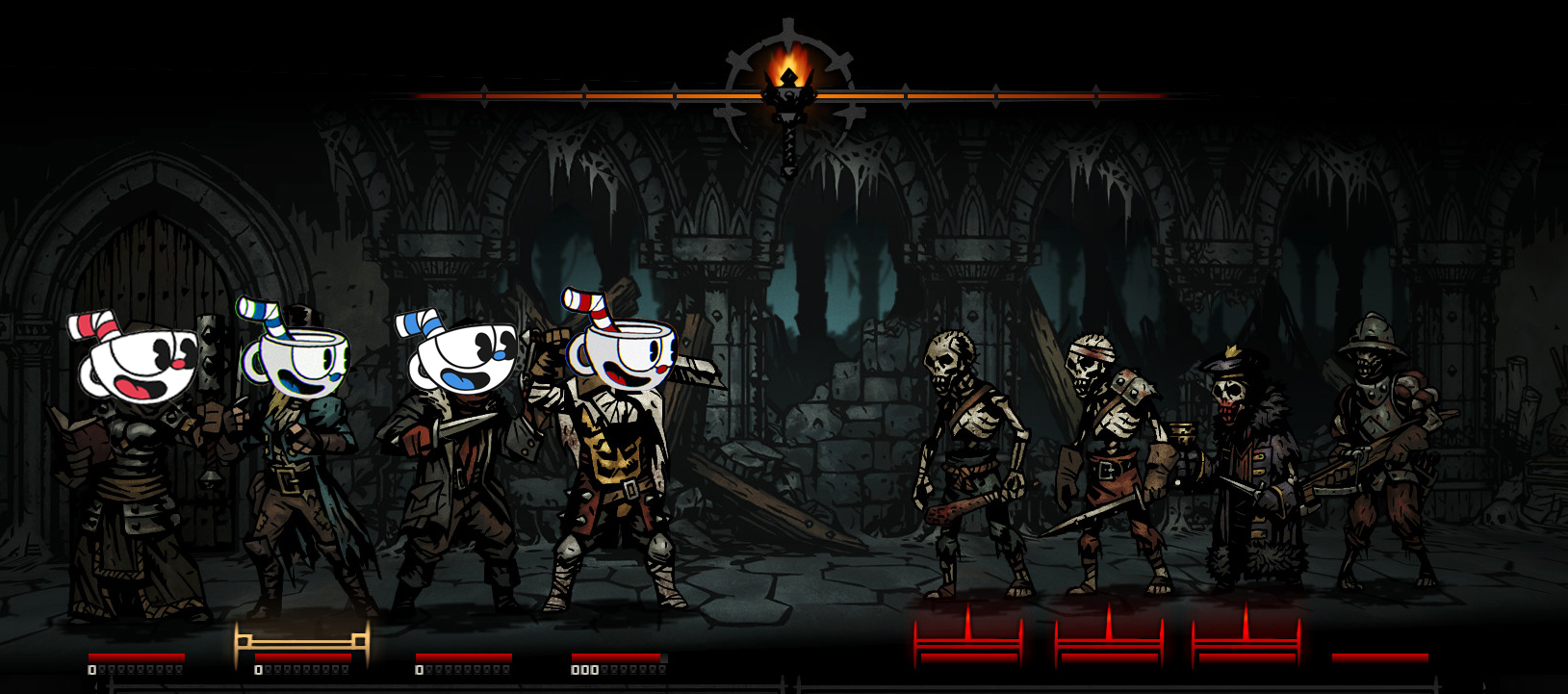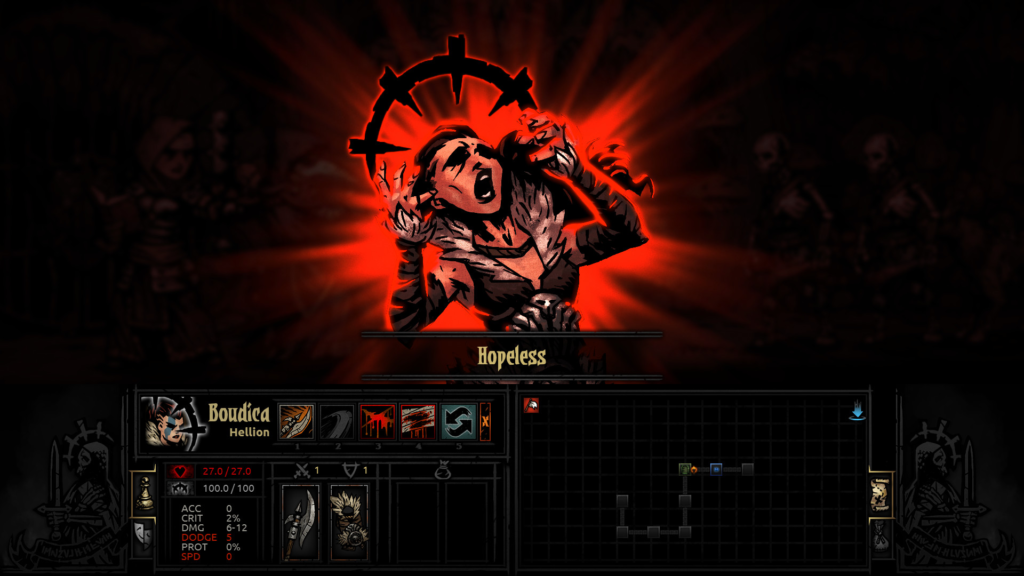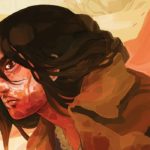
Darkest Dungeon
Developer: Red Hook Studios
Platform: Nintendo Switch, PS4, PS Vita, Microsoft Windows, Linux, iOS
This review was for the Nintendo Switch
When one sets out to talk about a game as challenging as Darkest Dungeon, you have to take a moment to remember one simple rule which for most writers in the video game industry has gone past cliche at this point: Do not start the review by saying “This is the Dark Souls of (insert genre here)” We can’t just make that comparison for every game with a high difficulty level…
So anyway, for those who haven’t heard of Darkest Dungeon, this is the Cuphead of turn-based roguelikes.

Seriously though, that’s not even a fair comparison. Darkest Dungeon has been out on various platforms since before that game was even released, and has its own identity. Originally hitting Steam back in 2015, it’s one of the rare babies born from the crowdfunding womb (Kickstarter) that’s been generally well received. However, now it has come to the Nintendo Switch– and with that comes more talking points.
For those that are coming into this blind, Darkest Dungeon is indeed a rogue-like with RPG elements. It has a strikingly dark, Lovecraftian art style that reminds me of Mike Mignola’s work on the Hellboy comics. The design is one of it’s largest draws; seeing set in motion is like guiding your four-party team through a bleak, grotesque storybook. The whole game is about dungeon crawling. You level up your estate (your home base) and various characters to progress and venture into more dangerous ones.
The mechanic that really sets this game apart from others in the genre is its stress system. Characters display two different bars, one for health and one that tracks their stress. If a character’s stress level gets too high, it can either cause them to have a psychotic break (a terrible temporary affliction on the character) or, in some cases, a heroic virtue. If they reach high enough levels, they can even die of a heart attack.
After a dungeon, characters who have fallen ill, or need to unlearn a bad quirk can visit the sanitarium back at the estate. They can also drink or pray away their stress at the bar or church. This makes for an interesting strategic situation between the player and the barracks of characters (that you can name by the way). You can send them to get care, but it isn’t cheap, or you could simply dismiss them if they are too far gone, and try to build up new ones. It makes for a tough situation when the crusader you named after your best friend just got inflicted with tetanus and is now paranoid of the rest of the party, shouting stressful ramblings during battle.
The gameplay itself is challenging at first, but rewarding. Even on the ‘lowest’ difficulty, which only really cuts grinding, shortens the main campaigns length from 80 hours to 40. A welcome addition, I may add. The learning curve is a little steep because the tutorial only shows you the basics. Luckily, once you start understanding the systems, and what characters work well together, playing is an absolute blast.
Starting Darkest Dungeon, it’s clear that the game was designed around PC because there is a lot of menus. The game is just as much about character management as it is about the dungeons. On a console, however, this can be a bit cumbersome to the experience. Especially when the default controls take some getting used to. When I dove into the Switch version in docked mode, it was frustrating trying to navigate, and it took me longer than I would’ve liked to finally get a handle on the controls. In handheld mode, it’s a different story.
Utilizing the Switch’s touchscreen, you can control things much more intuitively. In fact, you don’t even need to use the controllers. You can play with just the tablet’s touchscreen, sans Joycons, or you can attach the joy-cons and use the touchscreen in combination. This control scheme is probably the best way you can experience the game, next to a mouse. Having said that, being able to bring it on the go makes it the most convenient way to play. With the ability to suspend the game at any point, even mid-dungeon with the Switch’s hardware makes tackling dungeons even in small doses a delight.
Verdict
Play it! Darkest Dungeon succeeds in being one of the more visually inspired, turn-based RPG’s of the last decade, with a unique psychological mechanic weaved deep into its gothic threads. The new Switch version provides the game with even more versatility, effectively making it one of the best ways to lose your sanity in its horrific depths.
The base game is available now to purchase on the e-shop for $24.99 or in the “Ancestral Bundle” for $34.99 — which includes both the Shieldbreaker DLC and Crimson Court DLC.
Note: As reported on by Kotaku, The Crimson Court DLC currently has a bug that doesn’t allow it to be beaten, so you may want to hold off on purchasing that one until it’s patched (which should be soon!)Edit: Red Hook has released an update fixing the issue!
The game is also available on Steam, PS4, Vita, Xbox One, and iPad.




![[PODCAST] THE COMICS AGENDA: THE DEATH OF COMICS AND OTHER CLICKBAIT](https://geekd-out.com/wp-content/uploads/2017/11/comics-agenda-2-150x150.jpg)
